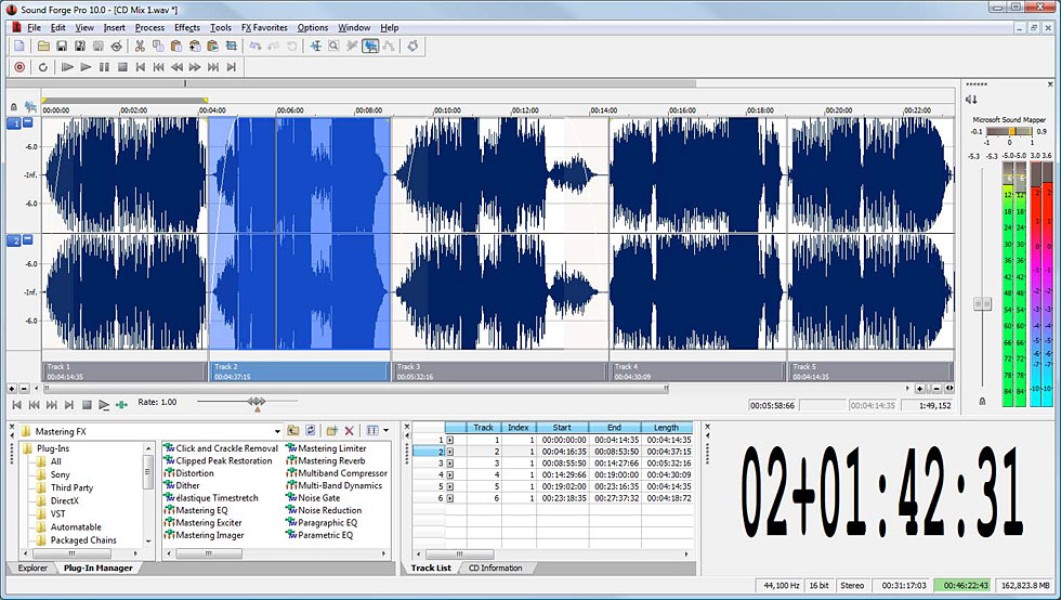
This uses conventional envelopes within the upper overview waveform display, and new nodes within the envelope can easily be created and then edited. SI8P also offers basic automation options for volume and pan. Dragging and dropping audio between open files is also supported. If you make a selection in one file, then drag and drop it onto an open spot in the workspace, the selection is automatically turned into a new file. Volume and pan automation envelopes are available.Editing options include the usual copy, paste, cut, trim, merge, fade, crossfade, gain adjustment and so on.

You can record multiple times into a single file, whether adding new material at the end or dropping in within the middle of a recording existing audio is simply shifted along the timeline to accommodate it. When you create a new empty audio file, you can specify its format and, providing your audio hardware is connected and configured, you just hit the record button and off you go. Routine recording and editing tasks will feel intuitive to anyone with experience of another mainstream audio editing environment. It’s also worth noting here that although there are plenty of options for audio formats, bit depths and sampling frequencies, surround files are not supported.
SOUND FORGE 8 PRO WINDOWS
The main windows can be resized, as can both the upper and lower panes of the waveform display. You can use the former to navigate the latter when zoomed in on the lower waveform display. Multiple files can be opened at the same time, and are displayed in separate windows, each with an ‘overview’ waveform at the top and a more detailed view underneath. All these features are kept fairly compact so that the central portion of the display can accommodate floating windows for your open audio files. At the base of the display are the transport controls, which include a jog wheel, and four additional buttons to access the Effects, Mixer, a Timer to make timed audio recordings, and a Media Browser. SI8P’s graphical user interface is pretty conventional, with a main menu and toolbar strips that provide easy access to many of the key file-management and editing tools.

SOUND FORGE 8 PRO PDF
The software also includes a comprehensive PDF manual that, despite a few ‘second language’ issues, provides a good introduction to the feature set. This is a sensible policy and will be very welcome for potential new purchasers.
SOUND FORGE 8 PRO TRIAL
It’s also worth noting that there is a fully functional (bar some batch and export options) three-day trial available. Although I’ve experienced slicker installation and authorisation processes, Internet Co’s gets the job done. SI8P provides all the routine editing options required for working with mono and stereo audio files.The software is available as a download, and installation follows pretty standard procedures under both Windows and OS X. Exactly what you can do with these more specialist audio formats depends upon the specification of whatever audio interface you might have available but, even so, DSD support is a rarity amongst the mainstream audio editors. These include typical file editing options, audio format conversion, a broad array of bundled plug-ins (spanning EQ, dynamics, spatial effects, modulation and mastering treatments), basic automation, useful metering tools, batch processing, well-featured CD creation, the ability to create Acid files and, as mentioned earlier, support for handling DSD and high-resolution PCM (DXD) files.
SOUND FORGE 8 PRO PRO
Sound It! 8 Pro (which I’ll call SI8P from now on) has a solid set of basic audio editing features. On paper, the feature set looks promising and, with an impressive bundle of plug-ins included and the intriguing option of support for DXD/DSD native audio (with suitable audio hardware), it has features that may well appeal to both those new to audio editing and those working in more niche, high-fidelity environments.


Could that be about to change with version 8? The new release has been fine-tuned for the English-speaking market, and with both Windows and OS X versions available, the company are clearly intent on expanding the product’s reach. The same may be true of Sound It!, produced by the Japanese developers Internet Co Ltd, but it’s likely to be less familiar to Western studio types. When it comes to audio editing software, most of the well-known choices have been around for many years and are very mature applications. If you’re looking for an alternative to the established stereo editing packages, Internet Co’s slick dual-platform offering might pique your interest.


 0 kommentar(er)
0 kommentar(er)
